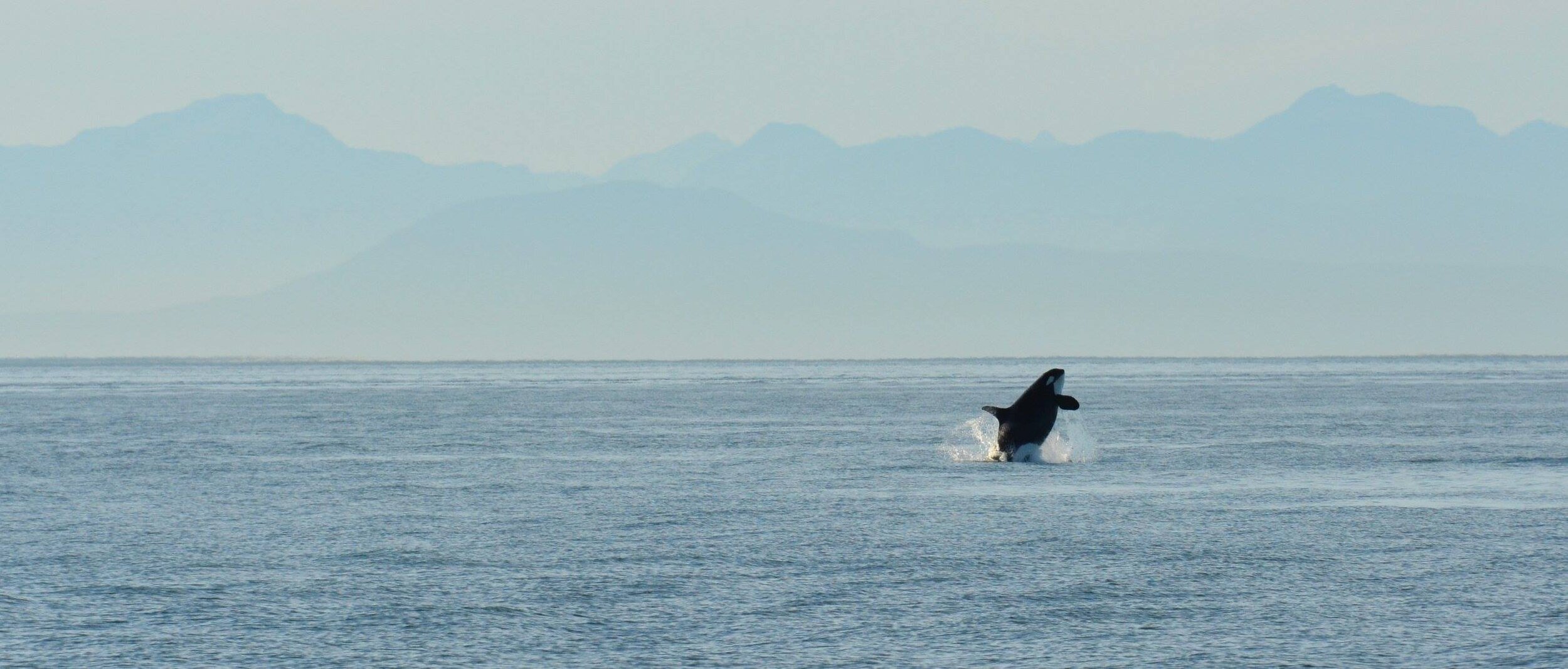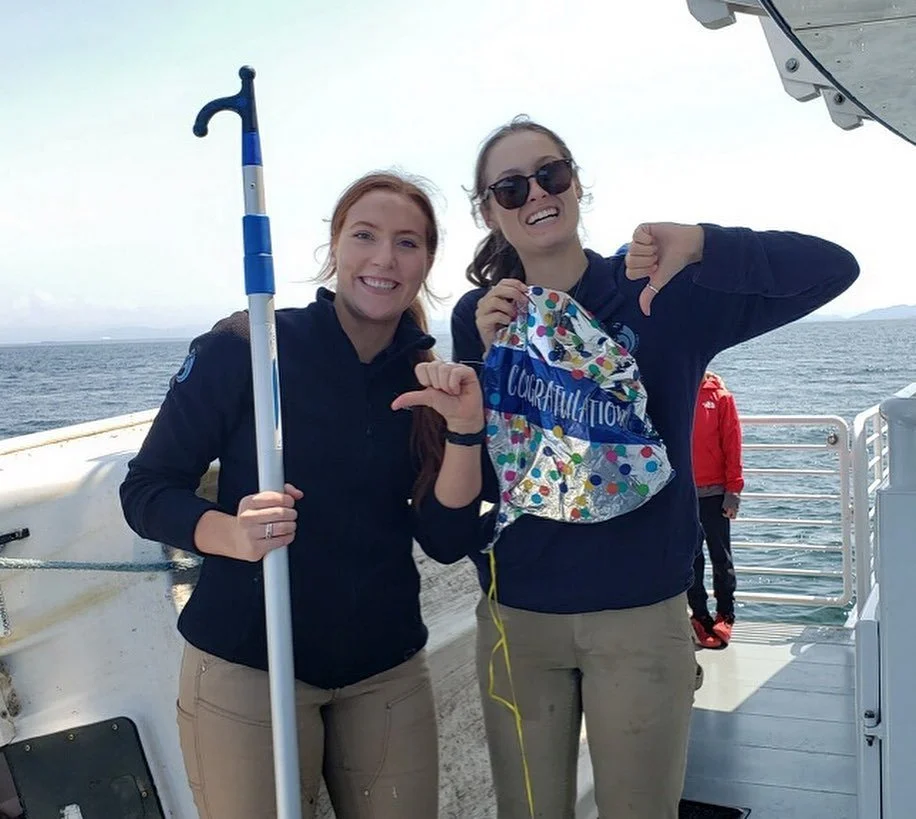
Wildlife threats
In addition to the work we do to help protect Southern Resident killer whales and recover salmon populations, the Pacific Whale Watch Association is involved in addressing threats to other local whales and wildlife. These threats include entanglement, ship strike, and pollution. Read on to learn what our members are doing and how you can help from home.
Ship Strike
Another threat to local whales, especially large, slow moving whales like humpbacks and gray whales, is ship strike. Only a fraction of collisions between whales and ships are ever reported. Large vessels like cargo ships and tankers are often not even aware when they’ve struck a whale. Small vessels can also be potentially harmful. Sadly it’s not uncommon for PWWA naturalists to observe one of our favorite whales sporting a new injury from a small boat collision.
The PWWA helps prevent ship strike by alerting ferries, cargo ships, tankers, and recreational vessels of whales in the area so that they can slow down and change course.
Entanglement
One of the biggest threats to large whales in the Salish Sea is entanglement in fishing gear such as pot lines and gillnets. Based on visible scarring, it’s estimated that at least 50% of local humpback whales have been entangled at one point in their lives. Without intervention, these entanglements are often fatal. In the sad event our operators discover an entangled whale, we work closely with response teams to document and report the entanglement. We also help to locate animals of concern and monitor the long-term health of animals that have been disentangled in the past.
Pollution
Pollution is a threat that affects all wildlife everywhere and sadly the Salish Sea is no exception. Marine pollution includes things we can see, like balloons, derelict fishing gear, and other floating debris, and things we can’t see, like microplastics and hazardous chemicals.
Exposure to chemicals is problematic because those toxicants accumulate in the tissue. The higher up on the food chain an animal is, the more toxicants they’ll have in their system. This is called biomagnification. Apex predators, like orcas, therefore have many contaminants in their tissues.
Balloons, plastic bags, and other garbage in the water are dangerous because, if ingested, they can block the digestive system and prove fatal. Our PWWA crew members remove harmful marine debris when spotted as conditions allow.
How Can I Help?
Now that you know a bit about how the PWWA helps address the threats above through our work on the water, here are some things you can do at home.
Reduce, Reuse & Recycle
Be conscious of the things you buy in general and choose options that include less packaging. Purchase things that can be used multiple times, like reusable shopping bags and water bottles. When it’s finally time to say farewell to things you can’t reuse, recycle or upcycle them to keep them out of landfills (and oceans)!
Cut the chemicals
Swap out your strong chemical cleaners for Safer Choice alternatives. Also avoid the use of chemical herbicides and pesticides. Remember, “all drains lead to the ocean”, so don’t use any products indoors or out that could be hazardous to wildlife.
Shop Local
Many of the vessels that traverse the Salish Sea are international cargo vessels. By sourcing products locally, you can cut down on the necessity for these large container ships and reduce overall ship traffic. This also means seafood! If you eat seafood, be sure you’re purchasing sustainable seafood from local fishers to help ensure it was caught using methods that eliminate bycatch and entanglement.
Balloons Blow
Often people want to celebrate special occasions with balloons, but each year PWWA members remove hundreds of harmful balloons from the Salish Sea. Don’t ruin a happy moment by creating a hazard for wildlife. Visit www.balloonsblow.org to learn about safer alternatives to using balloons.






